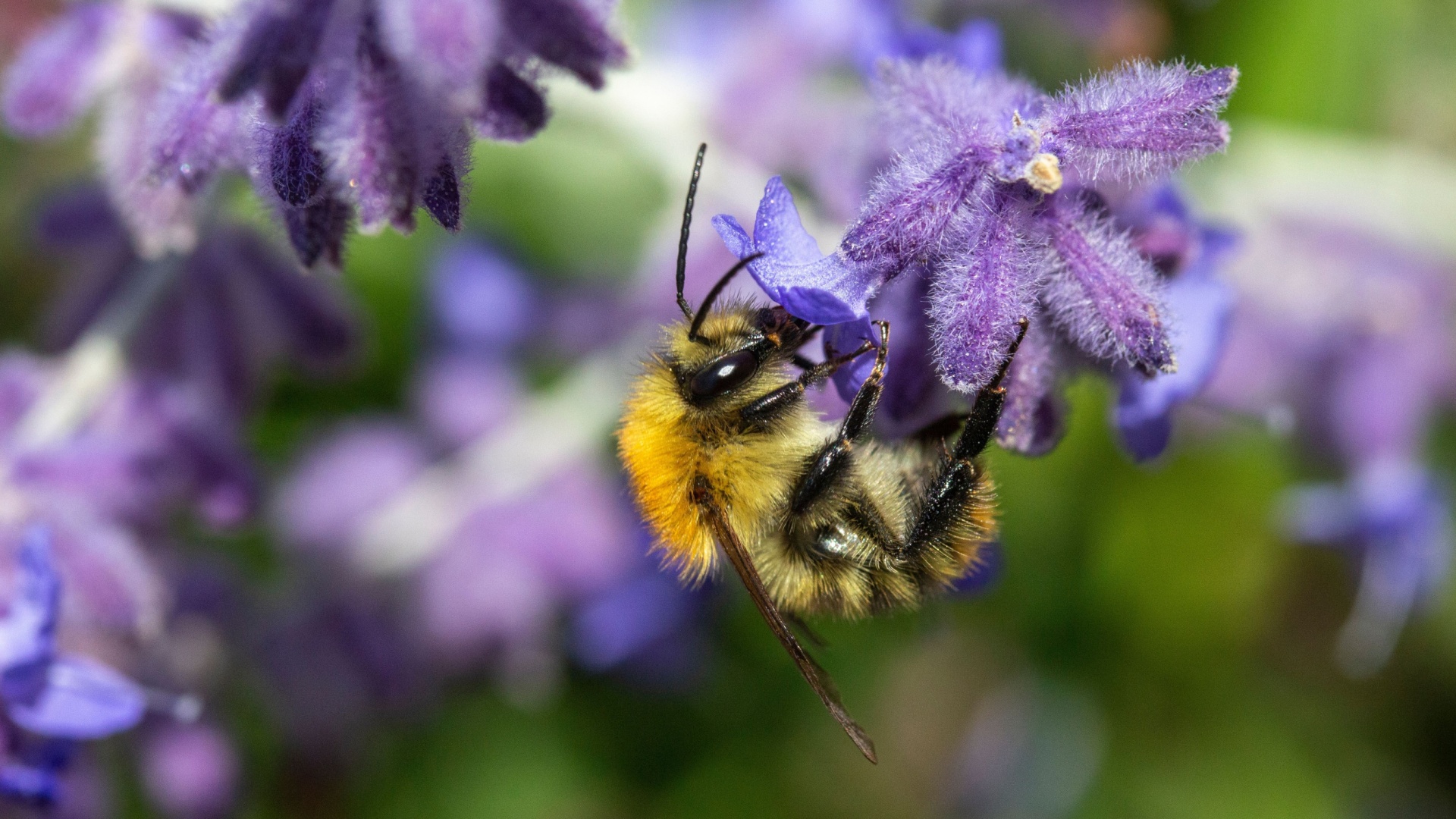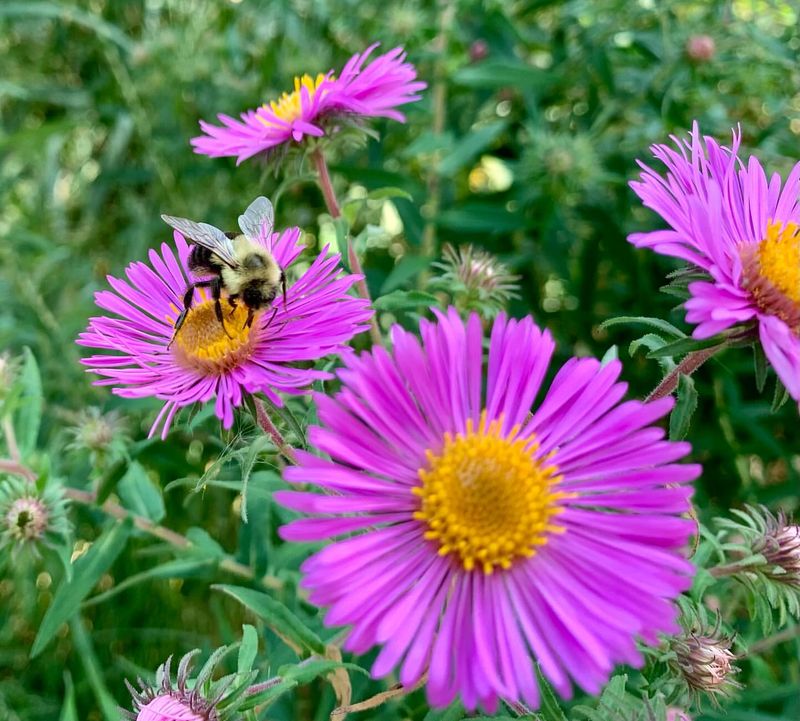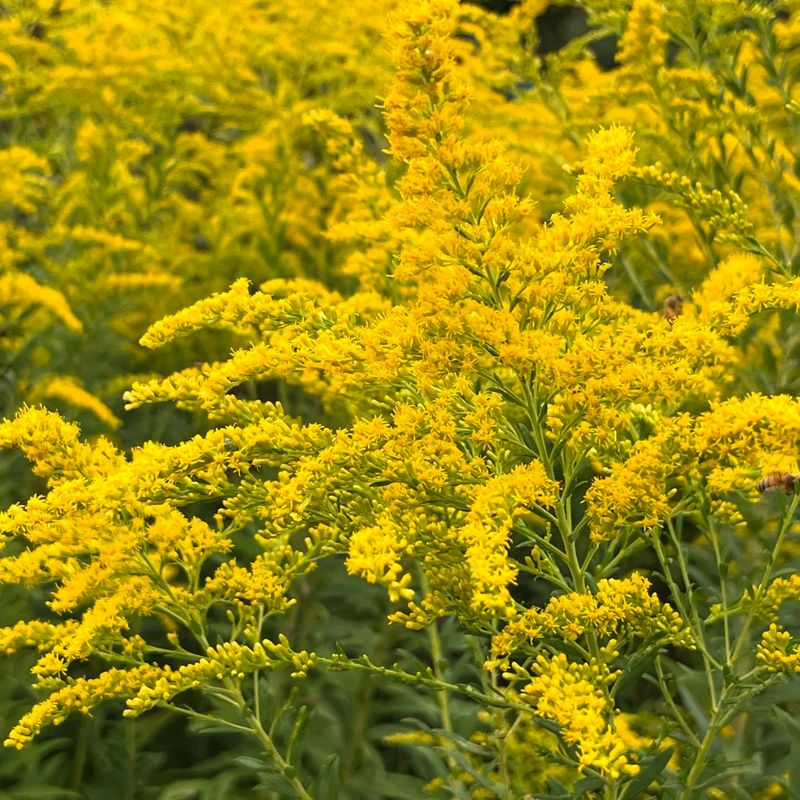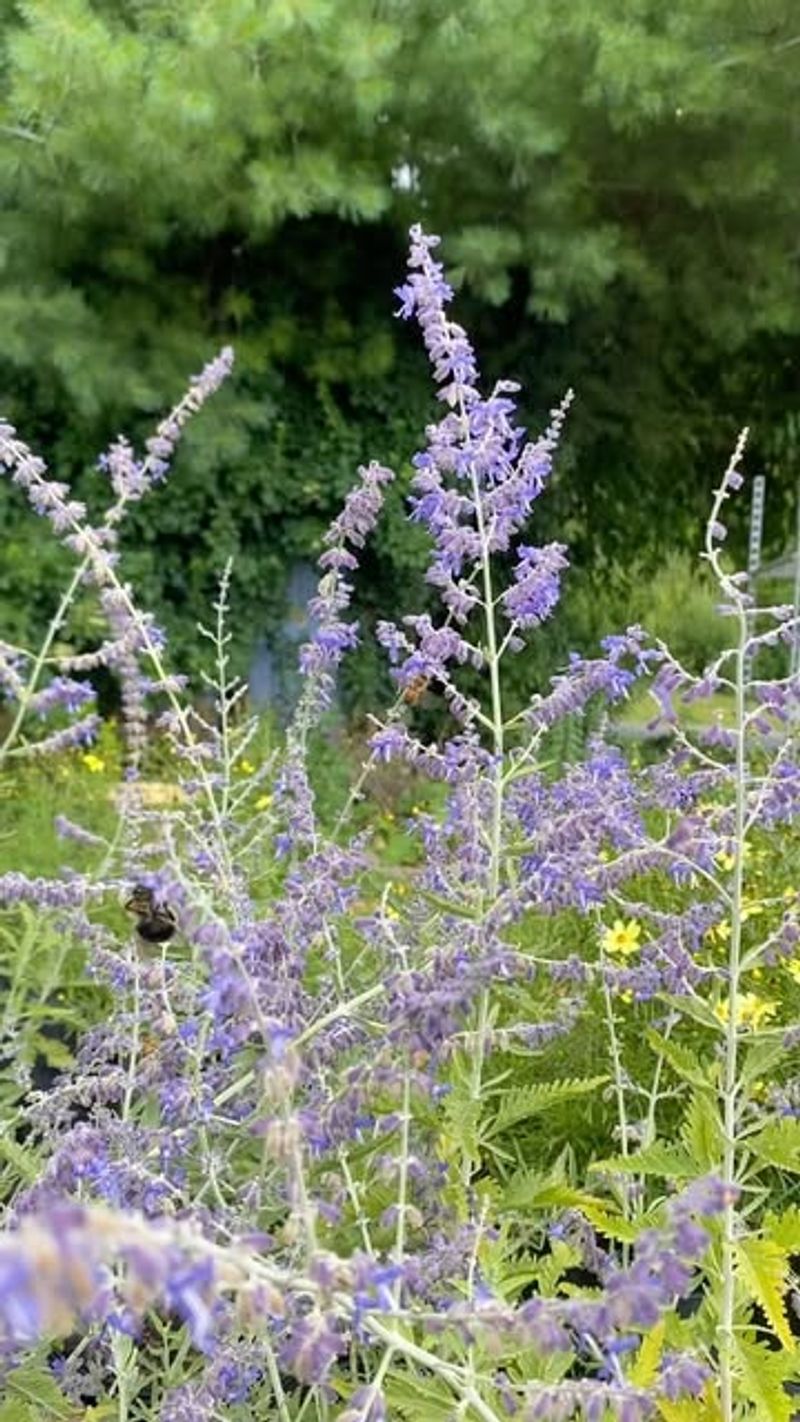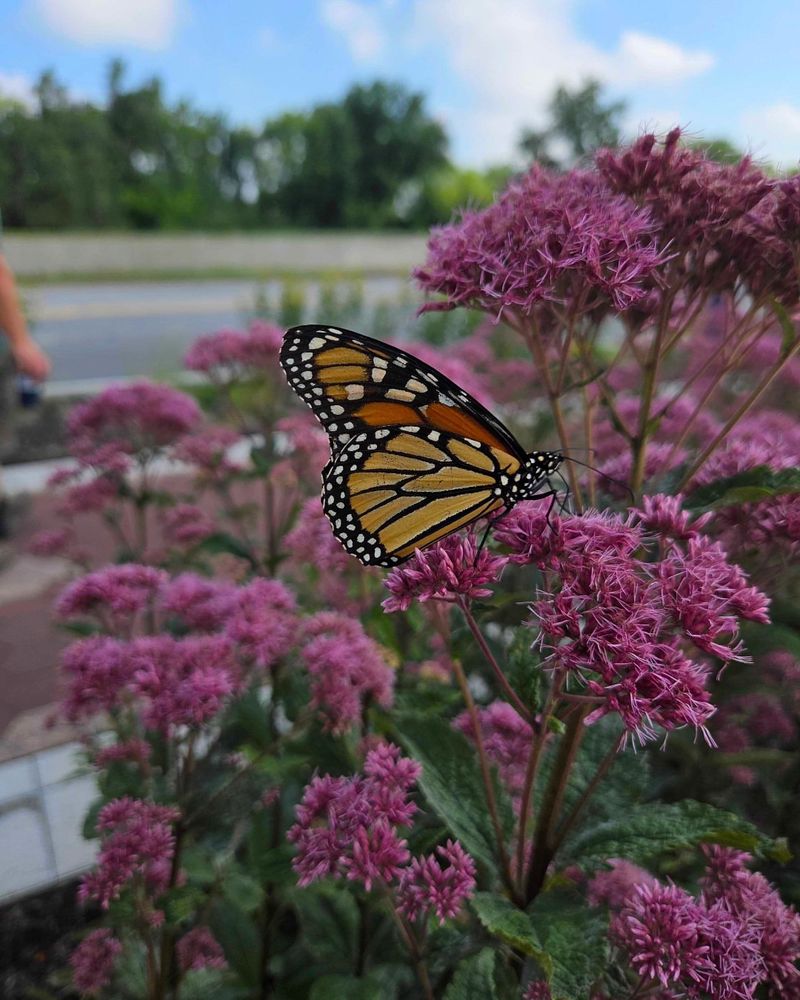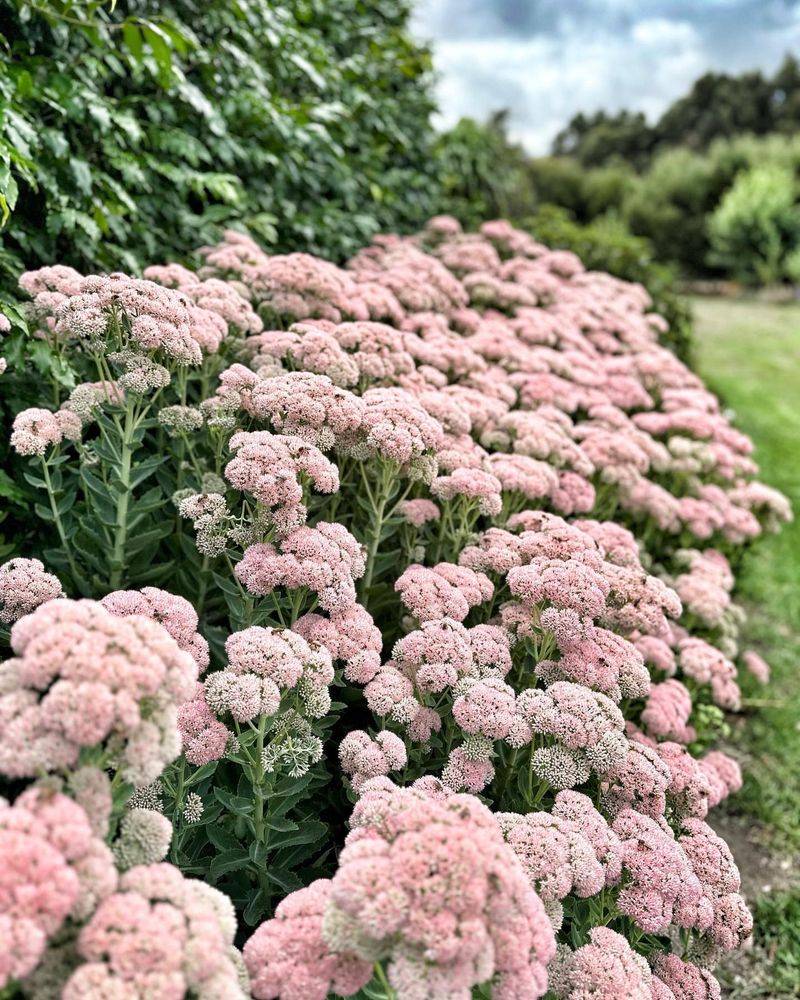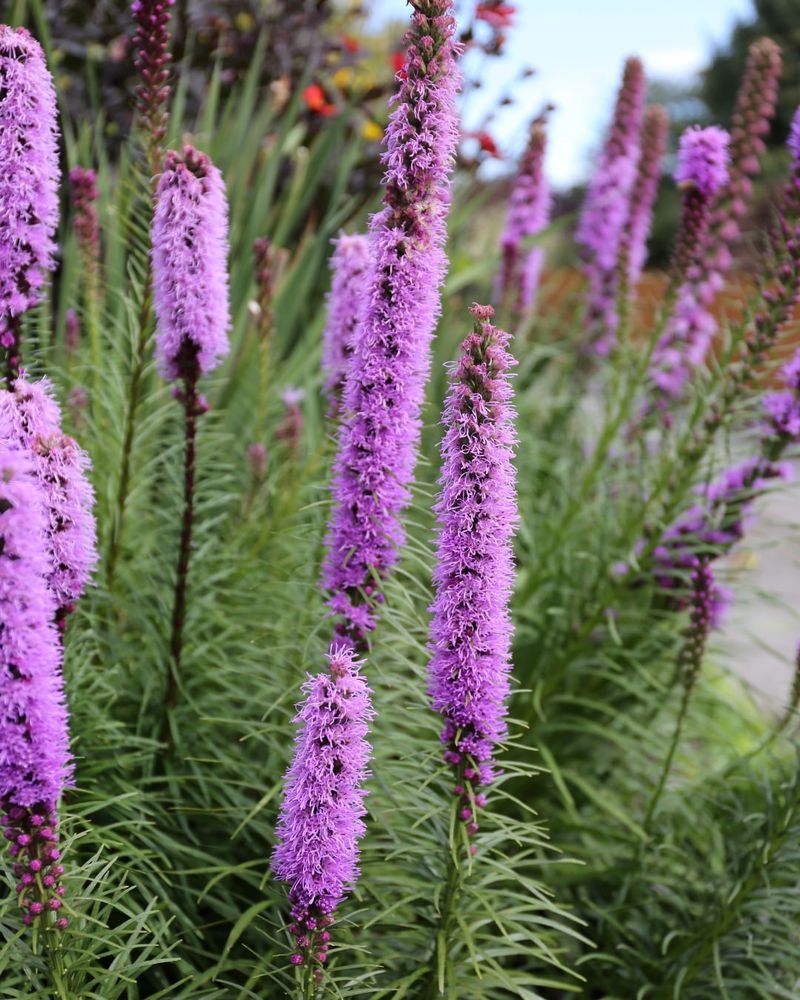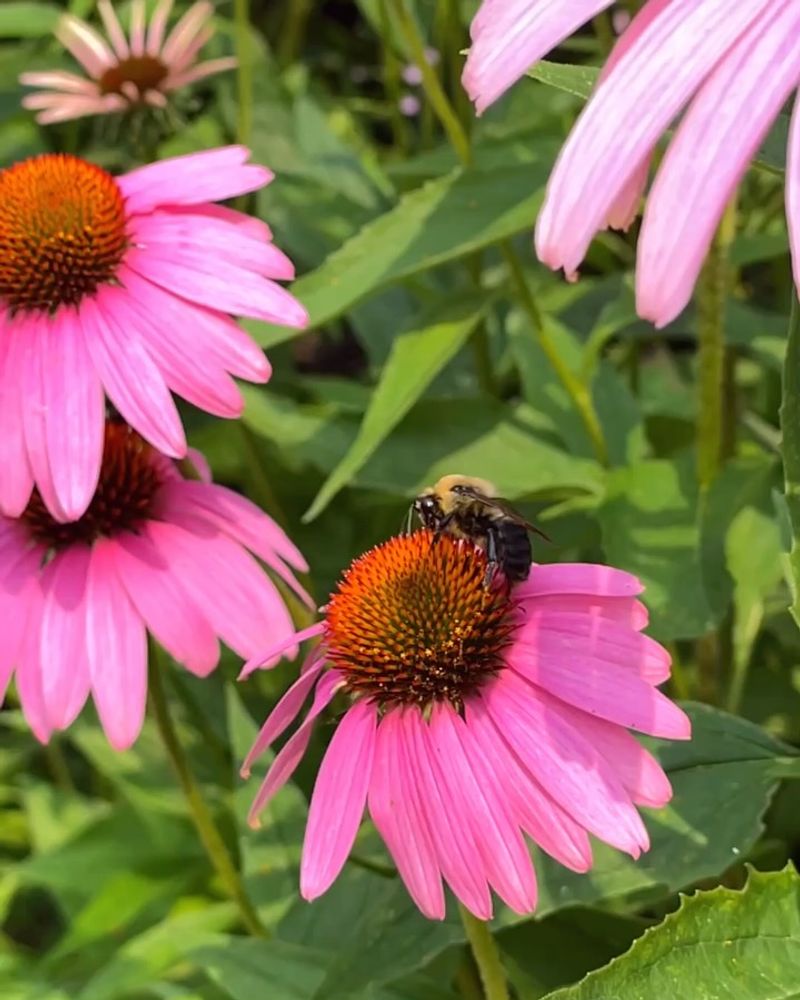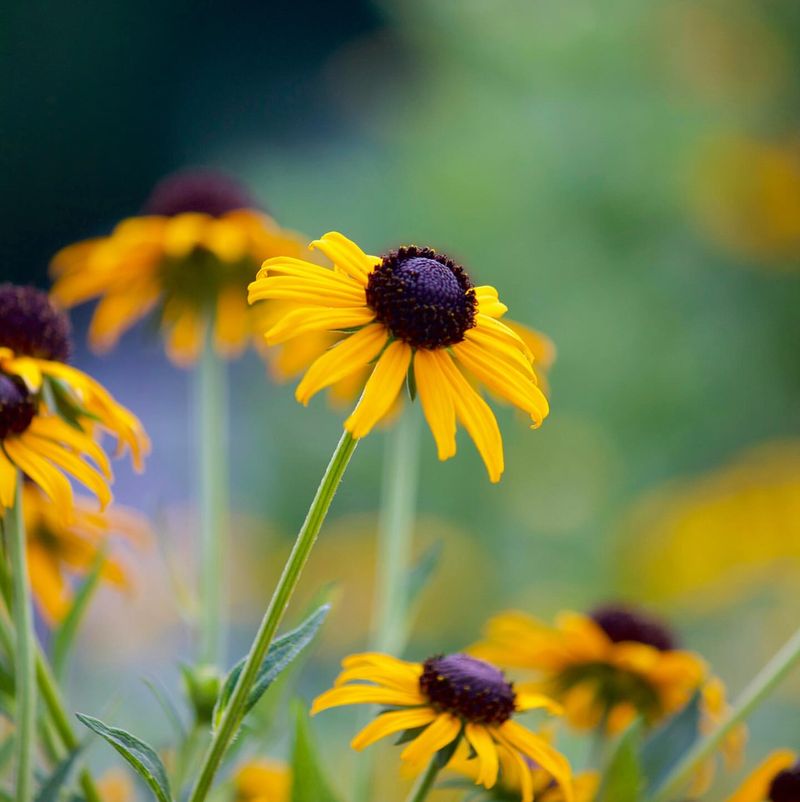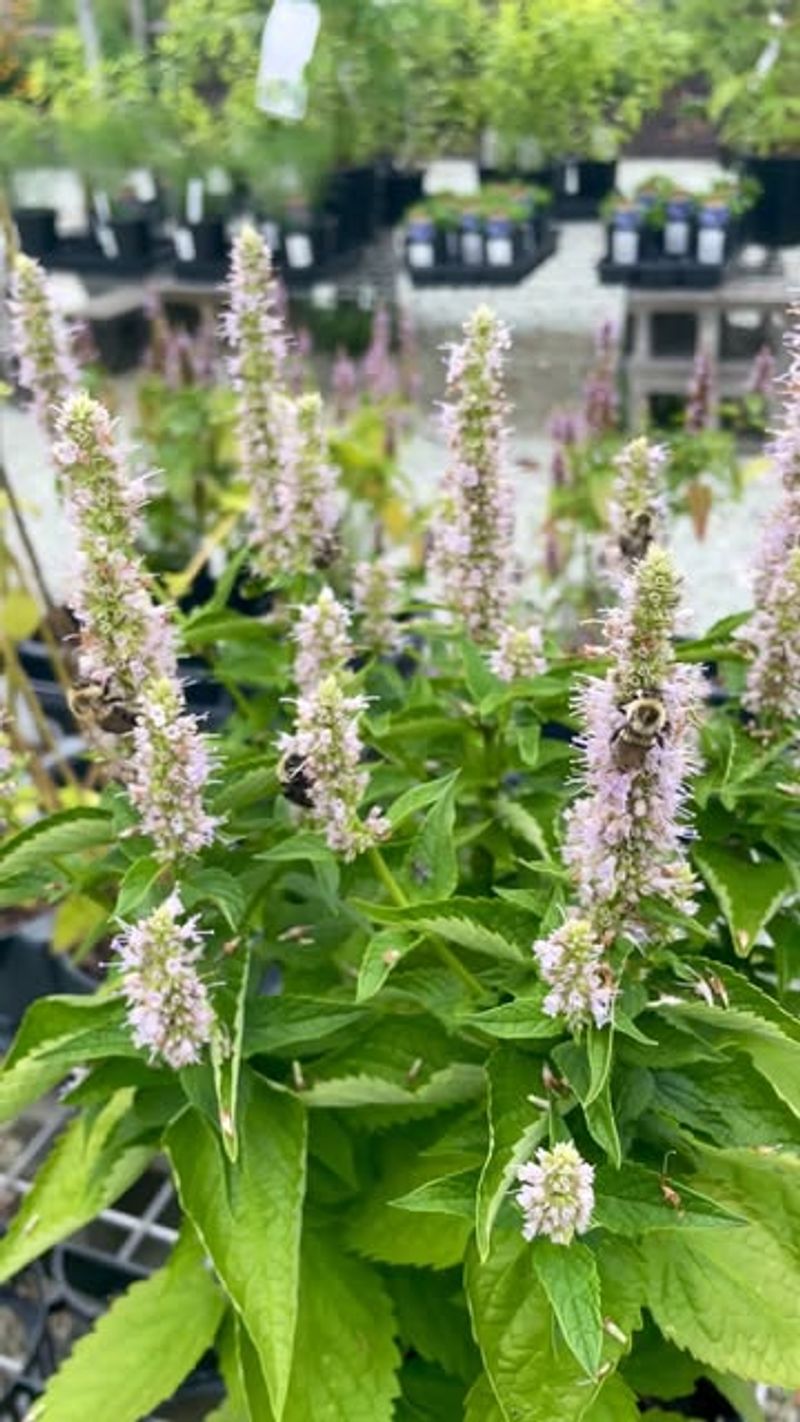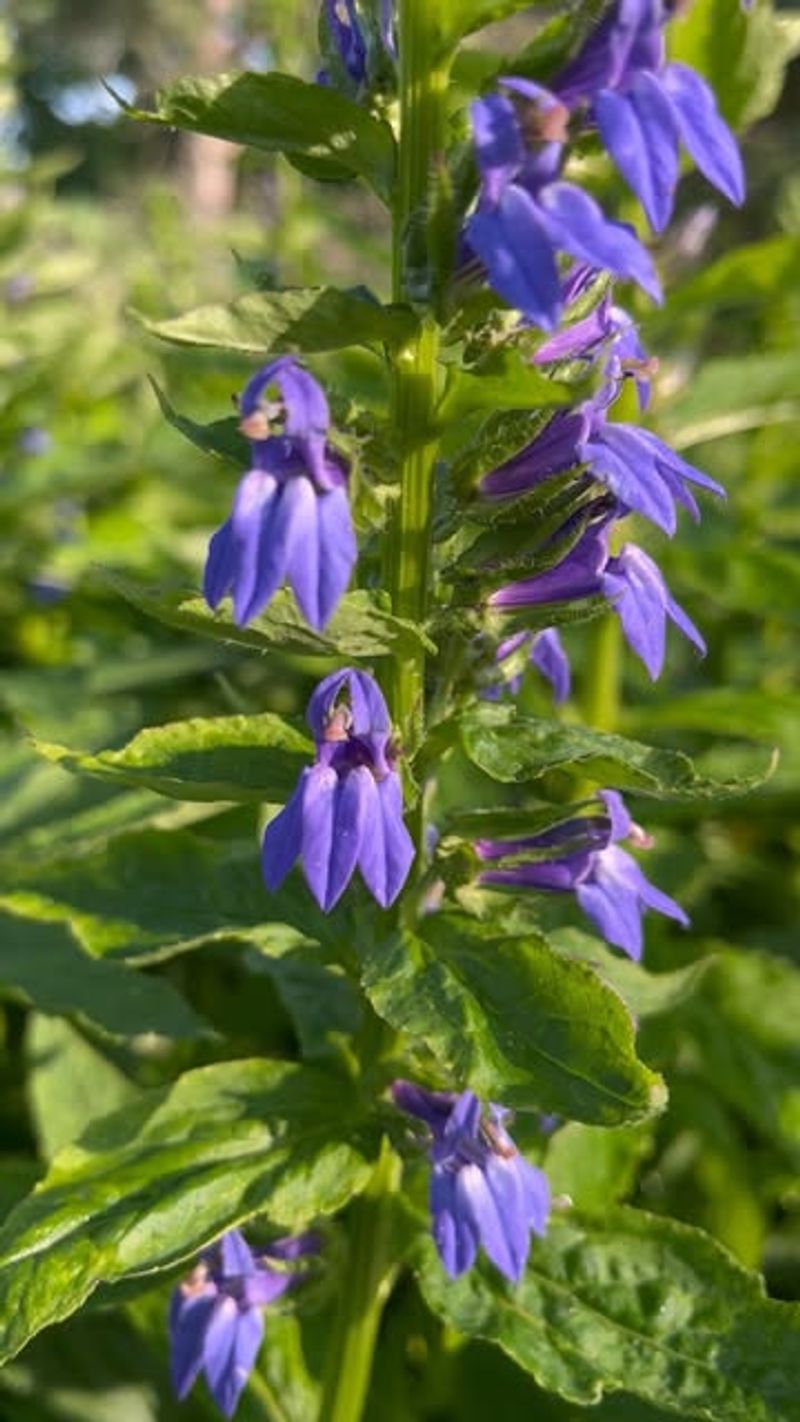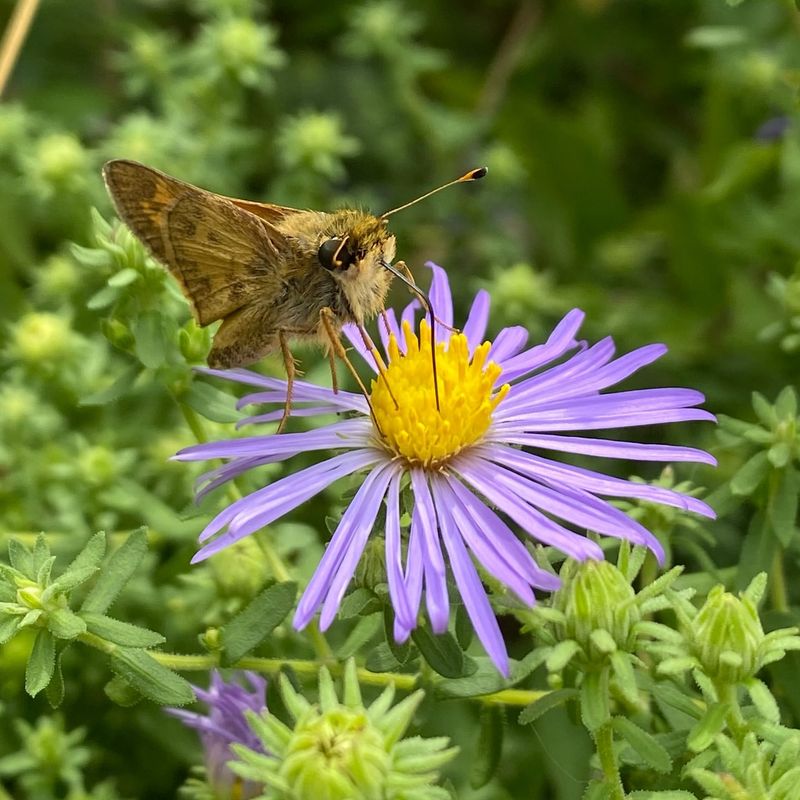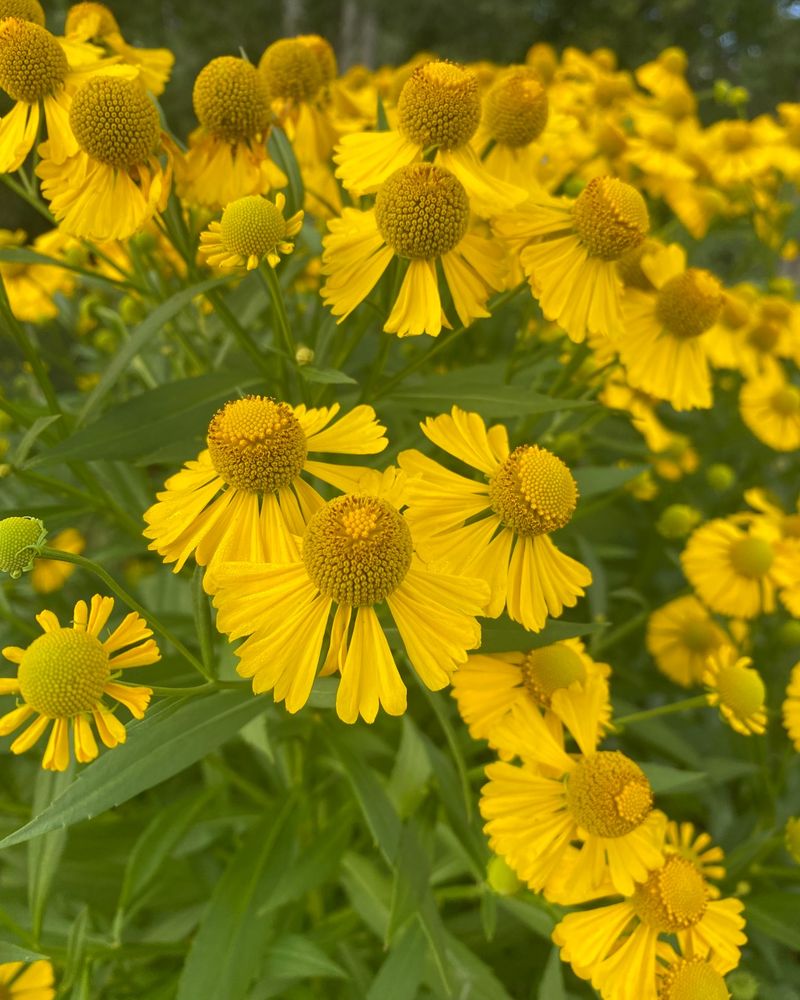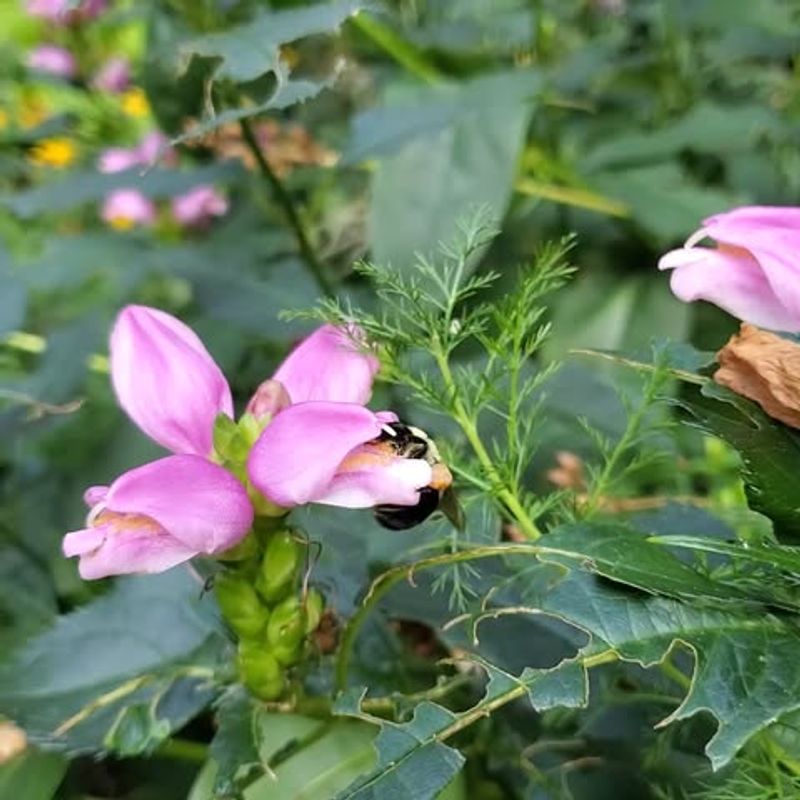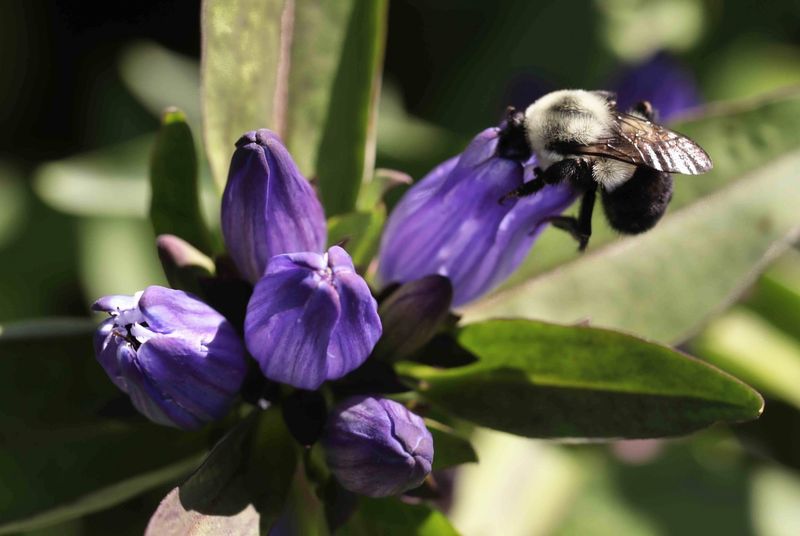As summer fades into fall, Michigan gardens can still buzz with life if you plant the right perennials. Late-season pollinators like bees and butterflies need food sources when most flowers have stopped blooming.
Adding these hardy plants to your garden not only creates a colorful autumn display but also provides crucial support for pollinators preparing for winter.
1. New England Aster
Vibrant purple blooms appear just when most garden flowers are fading away. New England Asters create a spectacular fall display while providing essential nectar for monarch butterflies during their migration south.
Plant these robust natives in full sun and watch pollinators flock to your garden from August through October. Their daisy-like flowers add a pop of color that stands out against autumn’s earthy palette.
2. Goldenrod
Contrary to popular belief, goldenrod doesn’t cause hay fever! This golden beauty unfurls its bright yellow plumes in late summer, creating a buffet for bees and butterflies.
Michigan gardens benefit from native Solidago species that thrive in our climate with minimal care. The flowers last well into October, providing late-season pollen when other sources have disappeared. Their drought tolerance makes them perfect for tough garden spots.
3. Russian Sage
Lavender-blue spires create a dreamy haze in the autumn garden while attracting honeybees and other pollinators. Russian sage thrives in Michigan’s challenging conditions, laughing off drought and poor soil.
The aromatic silver-gray foliage looks beautiful even after flowering ends. Plant it where you can enjoy both its delicate color and the buzzing activity it attracts. Pairs wonderfully with ornamental grasses for a prairie-inspired landscape that supports wildlife.
4. Joe-Pye Weed
Native to Michigan wetlands, this gentle giant produces mauve flower clusters that butterflies simply can’t resist. Growing up to 7 feet tall, Joe-Pye weed creates a dramatic backdrop in rain gardens while supporting dozens of pollinator species.
The vanilla-scented flowers bloom from late July through September. Newer compact varieties fit smaller gardens while still offering the same pollinator benefits. Leave the seedheads standing for winter interest and bird food.
5. Autumn Joy Sedum
Succulent rosettes topped with broccoli-like flower heads transform from pale pink to rich russet as fall progresses. Bees absolutely cover these flowers during September and October when nectar sources become scarce.
The drought-tolerant plants thrive in Michigan’s sandy soils with minimal attention. Their flat flower clusters provide perfect landing pads for butterflies and beneficial wasps. The dried flower heads add winter interest and protection for beneficial insects.
6. Blazing Star
Tall purple spikes reach for the sky in late summer, creating vertical drama that Michigan butterflies can’t resist. Also called Liatris, these native prairie plants bloom from the top down – an unusual trait that extends their flowering period.
Blazing Star thrives in full Michigan sun and tolerates our clay soils beautifully. The nectar-rich flowers support specialist bee species and migrating monarchs. Plant in groups of 5-7 for the most dramatic butterfly-attracting display.
7. Purple Coneflower
Iconic pink-purple petals surrounding a spiky orange center make this native a garden superstar. Echinacea keeps blooming well into fall, especially when deadheaded regularly throughout summer.
Beyond their beauty, coneflowers provide both nectar and pollen for bees. Later, goldfinches feast on the seeds if you leave some flower heads intact. Michigan gardeners appreciate their drought tolerance once established and deer-resistant nature in rural gardens.
8. Black-Eyed Susan
Golden yellow petals with chocolate centers brighten Michigan gardens from midsummer through first frost. Rudbeckia’s extended bloom time provides crucial support for pollinators when other flowers fade.
These cheerful natives self-seed gently, creating naturalized drifts over time. Their pollen supports specialized mining bees and their seeds feed birds through winter. Cut some for bouquets but leave plenty standing for wildlife benefit and winter interest.
9. Wild Bergamot
Lavender pom-pom flowers top square stems on this fragrant native mint relative. Also called bee balm, Monarda attracts an impressive diversity of pollinators with its nectar-rich blooms and aromatic foliage.
Michigan’s native bumblebees particularly love wild bergamot and will visit from July through September. The plants tolerate partial shade and clay soils common in Michigan landscapes. Their minty scent deters deer while drawing in beneficial insects that help control garden pests.
10. Anise Hyssop
Spikes of tiny purple-blue flowers emit a delightful licorice scent that pollinators find irresistible. Bees absolutely swarm this native plant, making it perfect for Michigan gardeners wanting to support honey production.
The long bloom period extends from July through September. Anise hyssop’s upright habit works beautifully in both formal and cottage gardens. The leaves make a delicious tea, while the flowers add color to salads – you’ll have plenty to share with the bees!
11. Ironweed
Regal purple flower clusters top 5-foot stems in late summer, creating a majestic presence in Michigan meadow gardens. Vernonia species are native to our state and provide crucial late-season nectar for butterflies.
The intense purple color stands out beautifully against golden grasses and autumn foliage. Despite the tough name, ironweed’s flowers are delicate and attract dozens of pollinator species. Plant in rain gardens or moist areas for best performance.
12. Great Blue Lobelia
Electric blue flowers illuminate shady garden corners from August through October. Michigan’s native lobelia attracts specialized pollinators with its unique flower structure that requires strong bees to access the nectar.
Unlike many late bloomers, Great Blue Lobelia thrives in partial shade and moist soils. The sapphire spikes add rare true-blue color to the fall garden palette. Their ability to bloom in shade makes them valuable for woodland gardens where pollinator plants are often lacking.
13. Aromatic Aster
Low-growing mounds become covered with small blue-purple daisies in October when most other flowers have finished. Aromatic aster blooms so late it provides the final nectar source before winter for Michigan’s pollinators.
The foliage releases a pleasant scent when brushed against. This tough native thrives in poor soils and drought conditions common in Michigan. Perfect for rock gardens and sunny borders, it creates a carpet of color that supports the season’s last butterfly generations.
14. Sneezeweed
Don’t let the name fool you – this cheerful native doesn’t cause allergies! Golden-yellow daisy-like flowers with distinctive button centers bloom from August until frost, supporting countless bee species.
Helenium’s late-season color brightens Michigan gardens when summer flowers fade. The plants prefer moist conditions but adapt to average garden soil. Newer compact varieties stay under 3 feet tall while providing the same pollinator benefits as their taller ancestors.
15. Turtlehead
Unique pink flowers resembling turtle heads open from late August through October. Chelone is a Michigan native that supports specialized bumblebee species that are the only pollinators strong enough to pry open the blooms.
Growing happily in partial shade and moist soil, turtlehead fills an important niche in woodland gardens. The glossy dark green foliage looks attractive all season. Plant near paths where you can observe the determined bumblebees forcing their way into each flower.
16. Bottle Gentian
Intense blue closed flowers never fully open, creating a fascinating spectacle as bumblebees force their way inside. This Michigan native blooms in September and October when few other blue flowers remain.
Gentians prefer moist, rich soil in partial shade – perfect for woodland garden edges. Their unusual flower form and late bloom time make them especially valuable for fall-flying pollinators. The electric blue color stands out dramatically against autumn’s warm palette.

